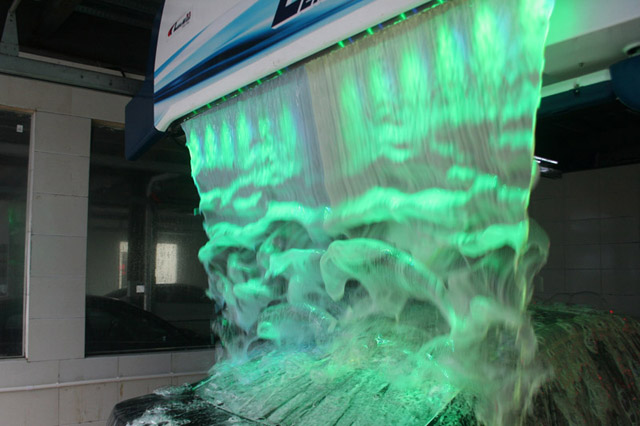Washing a car by hand allows a car owner to make sure every part of the car’s body gets cleaned and properly dried, but the process can take a very long time, especially for larger vehicles. An automatic car wash allows a driver to clean his car quickly and easily, with little or no effort. It can also clean the undercarriage of a vehicle easily, while hand washing an undercarriage may be more difficult or impossible. The advantages of this type of car wash include time savings, a lack of physical effort, and a fairly thorough clean. The cons, however, include risk of damage to the car, spotty washing and drying, and an inability to pay close attention to trouble spots.
Many automatic car wash locations today feature brushless washing, in which no physical contact is made with the vehicle by brushes or cloths. While this may prevent scratches, it can sometimes leave patches of dirt or grime untouched, meaning the car does not get cleaned thoroughly. Car washes with large brushes are more thorough, though they can cause minor to moderate scratching and can even tear off a radio antenna. The driver or car wash attendant will need to remove the antenna before entering the car wash. Brushless spray heads can also spray underneath the car easily, cleaning dirt or mud from underneath the vehicle. This is an added benefit to any type of car wash, and it is an easy way to break up grit that has built up over the course of driving.
Since an automatic car wash can cause blemishes or scratches, some now feature a waxing option that will apply a coat of wax and buff the car to a shine. This is a quick and easy way to perform a tedious job, though the results of such a feature will vary. Some automatic vehicle wash facilities do an adequate job, while others are sub-par; for the best waxing results, it is worth doing the job by hand, especially on high-end cars.
Some automatic car wash facilities try to reduce or eliminate scratching and blotches by hand-drying the cars after they leave the wash itself, though the dryers must use microfiber cloths during this process. Some facilities use air dryers instead, and while this will eliminate the potential of scratching altogether, it may not be the most thorough method of drying and can sometimes leave residue that will dry and cause splotches.


